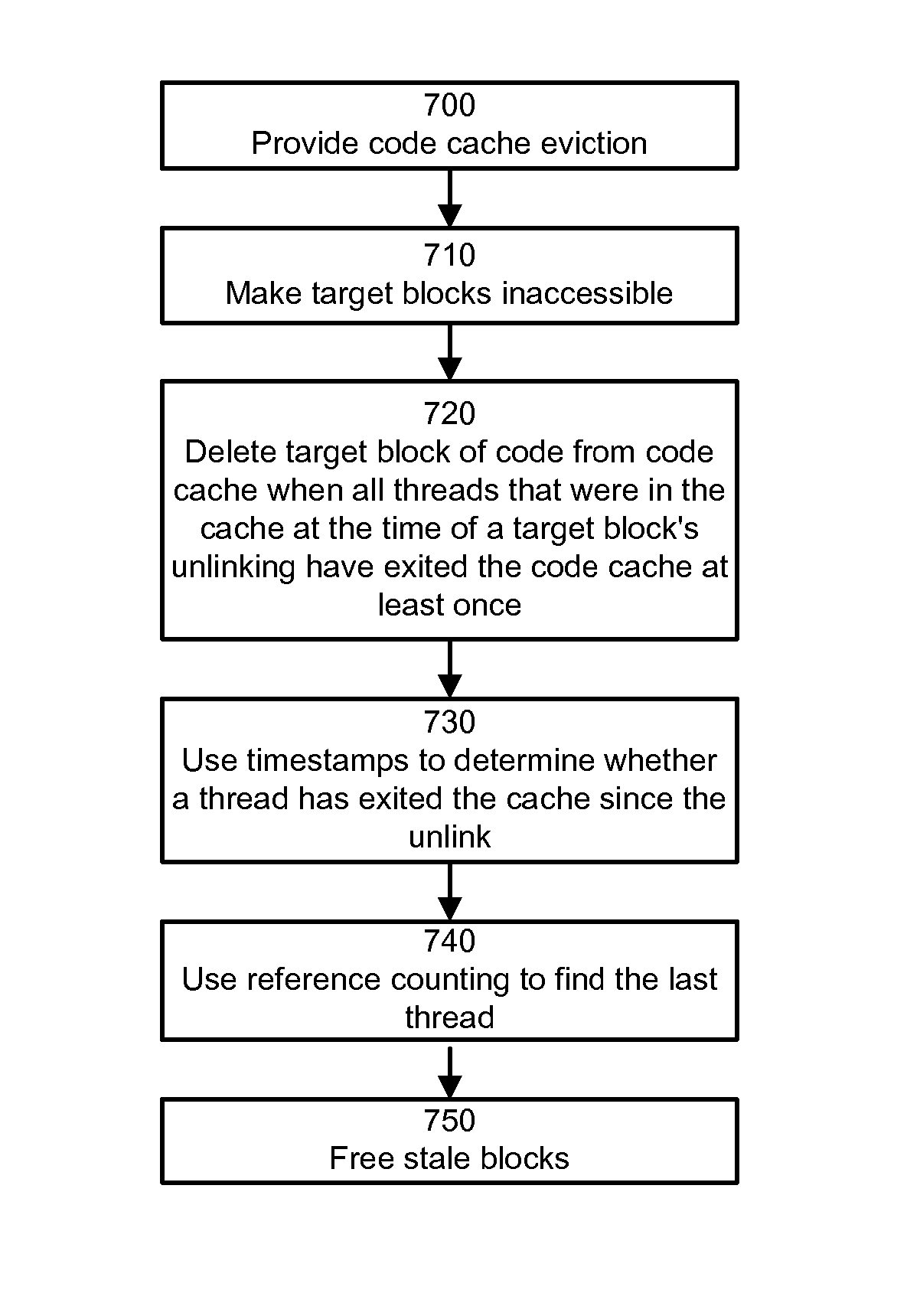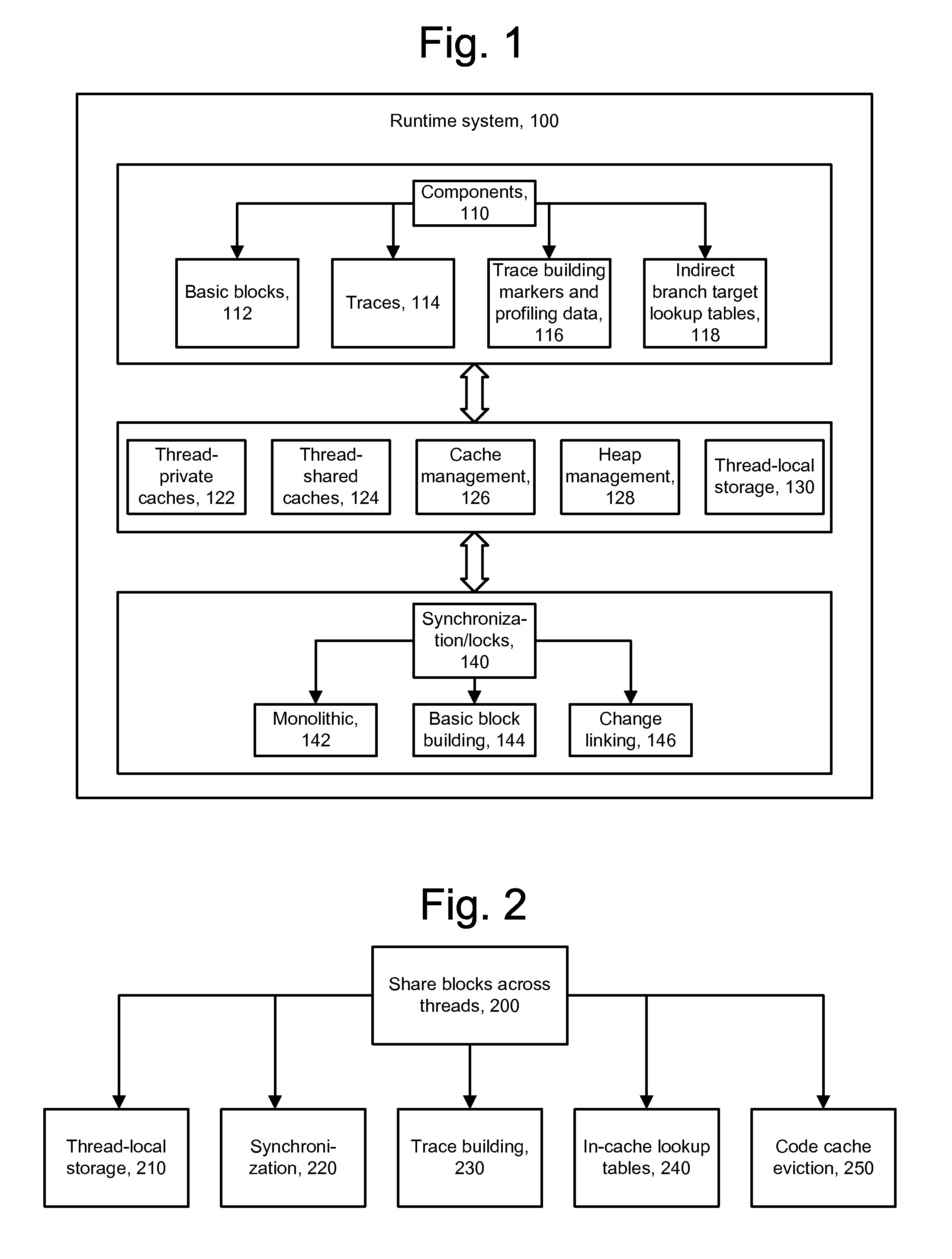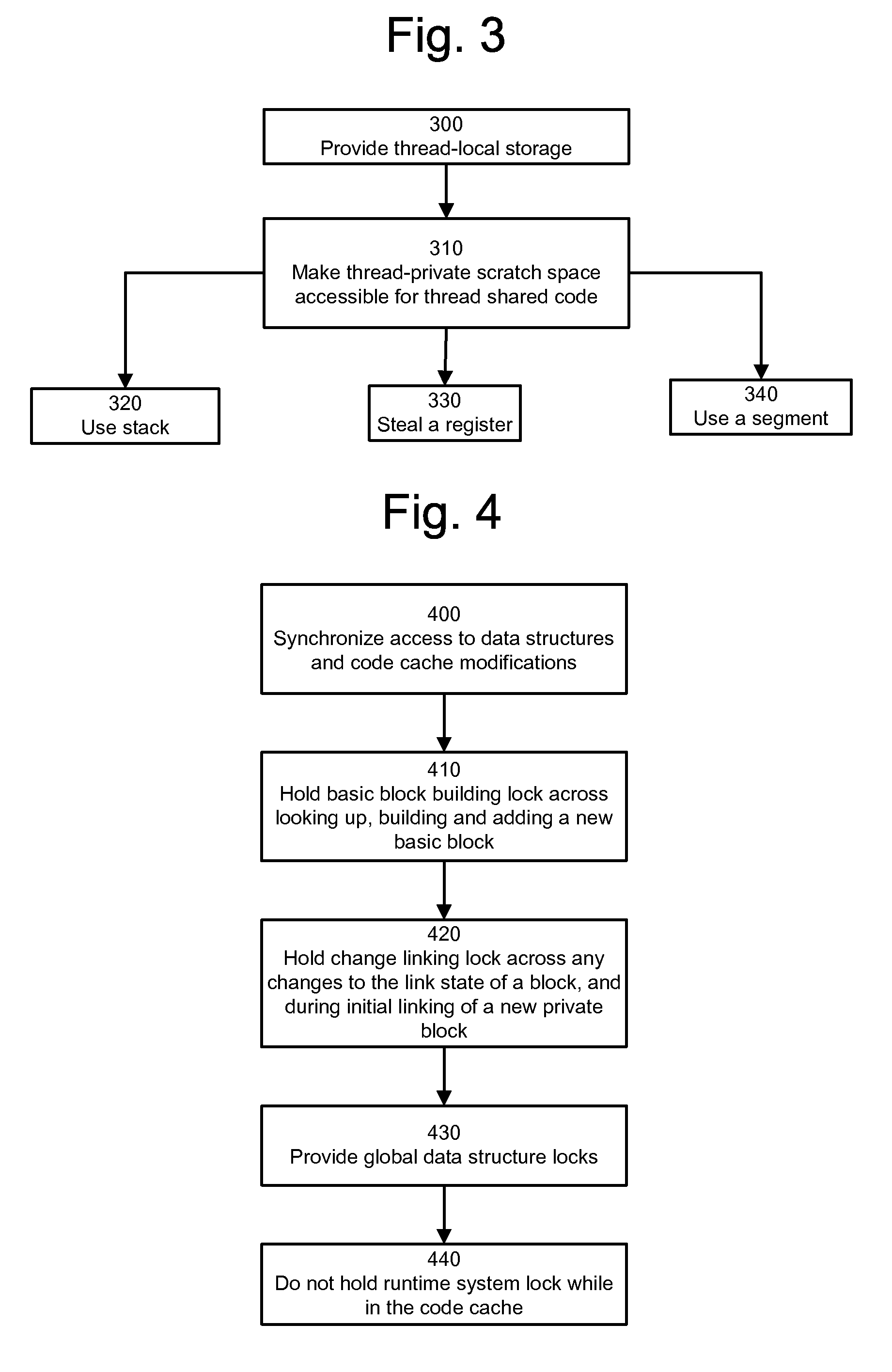Thread-shared software code caches
a software code and cache technology, applied in memory address/allocation/relocation, multi-programming arrangements, instruments, etc., can solve the problems of poor performance of these programs, inapplicability, and complex tasks, so as to avoid brute force all-thread suspension and avoid monolithic global locks
- Summary
- Abstract
- Description
- Claims
- Application Information
AI Technical Summary
Benefits of technology
Problems solved by technology
Method used
Image
Examples
Embodiment Construction
[0022]As mentioned at the outset, software code caches are increasingly being used to amortize the runtime overhead of dynamic optimizers, simulators, emulators, dynamic translators, dynamic compilers, and other tools. Despite the now-widespread use of code caches, they are not often shared among multiple threads. Some systems simply do not support threads, while others resort to thread-private code caches. Although thread-private caches are much simpler to manage, synchronize, and provide scratch space for, they simply do not scale when applied to many-threaded programs. Thread-shared code caches are needed to target server applications which employ, e.g., hundreds of worker threads all performing similar tasks. Yet, those systems that do share their code caches often have brute-force, inefficient solutions to the challenges of concurrent code cache access: a single global lock on runtime system code and suspension of all threads for any cache management action. This limits the pos...
PUM
 Login to View More
Login to View More Abstract
Description
Claims
Application Information
 Login to View More
Login to View More - R&D
- Intellectual Property
- Life Sciences
- Materials
- Tech Scout
- Unparalleled Data Quality
- Higher Quality Content
- 60% Fewer Hallucinations
Browse by: Latest US Patents, China's latest patents, Technical Efficacy Thesaurus, Application Domain, Technology Topic, Popular Technical Reports.
© 2025 PatSnap. All rights reserved.Legal|Privacy policy|Modern Slavery Act Transparency Statement|Sitemap|About US| Contact US: help@patsnap.com



